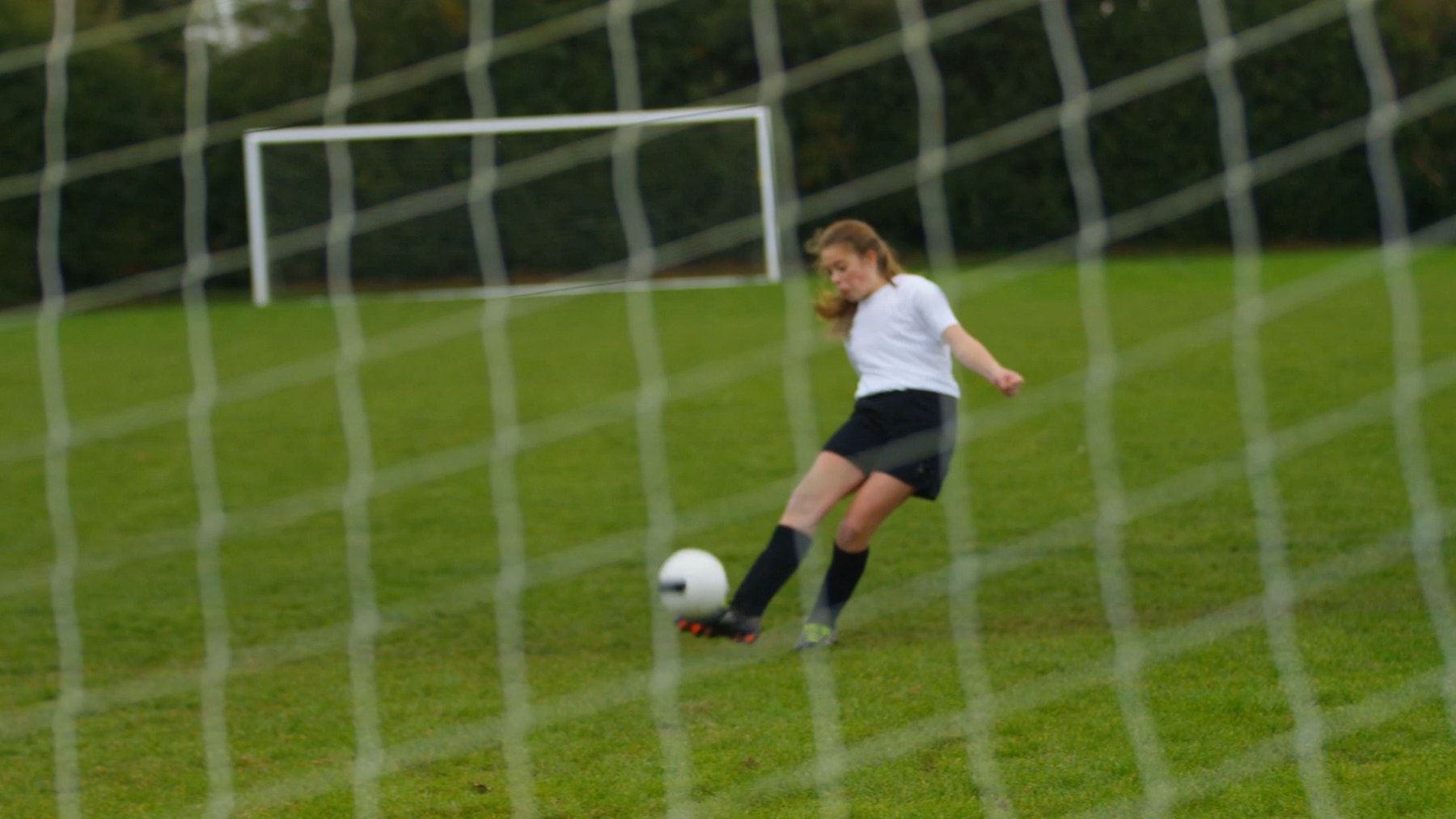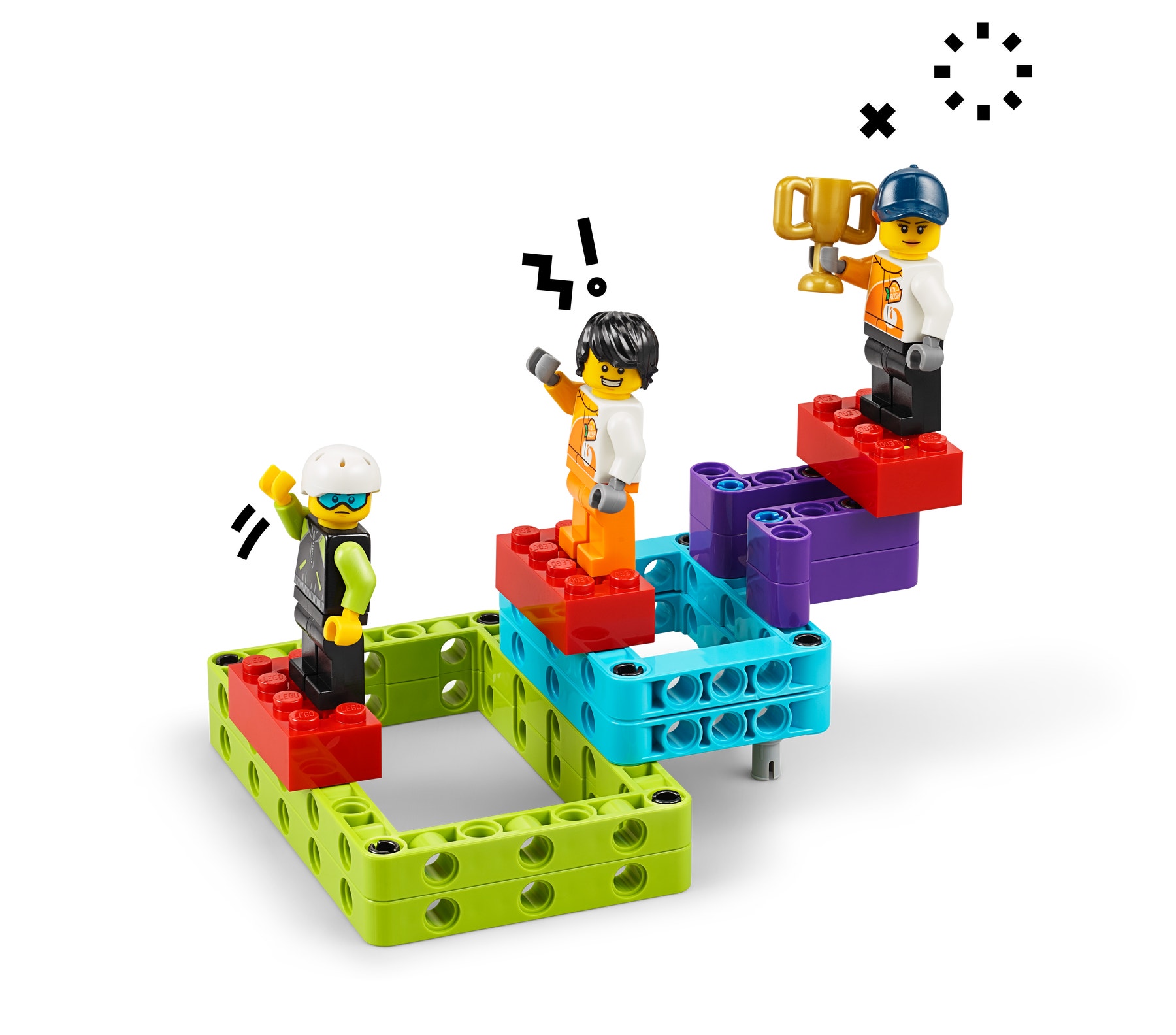Free Kick
The referee blows the whistle... Foul! The player gets a free kick. What does it take to be able to score every time?

Prepare
- Review the online pupil material. Use a projector to share this material with your pupils during the lesson.
- Make sure that you have covered Newton's three laws of motion in an earlier lesson.
- Consider the abilities and backgrounds of all your pupils. Differentiate the lesson to make it accessible to everyone. See the Differentiation section below for suggestions.
Engage
(Whole Class, 5 Minutes)
- Watch the pupil video here or access it via the online pupil material.

- Facilitate a quick discussion about the forces that help a footballer to score a goal.
- Ask questions like these:
- What happens when a footballer kicks a ball? (Their kicking leg puts kinetic energy [i.e. movement] into the ball. The mass [i.e.,weight] of the player's leg and the velocity ([i.e. speed] at which they kick determine how far the ball will move.)
- What enables footballer to kick the ball in different directions? (The angle of the football player's foot as it hits the ball determines in which direction it will go.)
- What makes the ball stop? (Friction from air resistance and from the surface the ball is rolling on, like the grass, will stop the ball.)
- Tell the pupils that they’re going to build a mechanical kicking foot, goalie and goal post.
- Distribute a set to each group.
Explore
(Small Groups, 30 Minutes)
- Ask the pupils to work in pairs to build the Free Kick model. Tell them to take turns, one partner searching for the bricks while the other builds, switching roles after each step has been done.
- You can find building help in the Tips section below.
- This model should only take 15 - 20 minutes to build. Once they have finished building, have the pupils give their models a go.
- Tell the pupils that now they will perform the three experiments that are found in the pupil material for this lesson.
Experiment 1:
- Ask the pupils to pull back the lever on their models, place the ball on the penalty spot and then release the lever.
- The ball should go straight into the bottom goal.
Experiment 2:
- Tell the pupils to swap out the red shoe for the yellow one.
- Ask them to predict the angle at which the ball will travel when the lever is pulled back and let go. Have them record their predictions on their Student Worksheets. (Teacher Support – Additional Resources).
Experiment 3:
- Now, ask them to swap the yellow shoe for the purple one.
- Again, have the pupils predict and record the angle at which the ball will travel when the lever is pulled back and let go.
Explain
(Whole Class, 5 Minutes)
- Gather your pupils together to share what they have observed in their groups.
- Ask questions like these:
- Why did the horizontal kicking mechanism shoot the ball upward when you replaced the red shoe with the yellow and purple shoes? (These shoes have an inclined plane. When they collide with the ball, the force [ i.e. the abnormal normal force] is always directed perpendicular [i.e. at a right angle] to the surface.)
- What is the force called when the ball comes off the player's foot after it is been kicked? (This force is called a ‘force vector’. It describes the amount of force that has been applied in a specific direction.)
Elaborate
(Whole Class, 5 Minutes)
- If time permits, have your pupils explore ways of beating the goalie. One pupil can set up the goalie while the other selects the best shoe for scoring a goal. Allow the ball to score even if it shoots into the top of the goal.
- Allow time for the pupils to disassemble their models, sort the bricks back into the trays and tidy up their workstations.
Evaluate
(Ongoing Throughout the Lesson)
- Give feedback on each pupil's performance.
- Facilitate self-assessment.
- To simplify the process, you can use the assessment rubrics that have been provided.
Observation Checklist
- Measure your pupils’ proficiency in describing how the forces acting in a specific direction on an object can change the object’s motion.
- Establish a scale that suits your needs. For example:
- Requires additional support
- Can work independently
- Can teach others
Self-Assessment
- Have each pupil choose the brick that they feel best represents their performance.
- Green: With some help, I can describe how the forces acting on an object can change its direction of motion.
- Blue: I know I can describe how the forces acting on an object can change its direction of motion.
- Purple: I can describe and explain how the forces acting on an object can change its direction of motion.
Peer Feedback
- Encourage your pupils to assess their peers by:
- Using the brick scale above to score each other's performance
- Presenting their ideas and giving constructive feedback

Tips
Model Tips
- Remind the pupils to count the holes in the beams and plates to help them to place the bricks correctly.
- If, after 20 minutes, they have only built the kicker and shoes, have them continue with the experiment, using their hands as a goal.
Differentiation
Simplify this lesson by:
- Encouraging your pupils to start by exploring just the red and purple football shoes
Increase the difficulty by: - Having the pupils reposition or redesign the shape of the shoe to score sideways past the goalie (i.e. to the left or right if the goalie is placed at the centre of the goal).
Extensions
(Note: This will require additional time.)
To incorporate the development of maths skills, ask your pupils to measure how high the ball goes and how far it travels with the purple and yellow shoes, and then calculate the ratio of height to distance travelled (e.g. if the ball goes 4 inches high and travels 18 inches in [horizontal] distance, then 4/18 = a ratio of 2:9).
ACMNA173
Recognise and solve problems involving simple ratio
1:1 Hybrid Learning
(Download the Personal Learning Kit lesson plan from the hybrid learning resources.)
Teacher Support
The pupils will:
- Explore how force vectors and the resulting motion of 2 colliding objects help a footballer shoot a ball high or low to score a goal
- Explore how the shape of an inclined plane/wedge can change the direction of a ball
- LEGO® Education BricQ Motion Prime Sets (one for every two pupils)
National Curriculum
Sc5/4.2a
Explain that unsupported objects fall towards the Earth because of the force of gravity acting between the Earth and the falling object
Sc5/4.2b
Identify the effects of air resistance, water resistance and friction, that act between moving surfaces
Ma5/3.1g
Use all four operations to solve problems involving measure using decimal notation including scaling
Ma6/3.2c
Compare and classify geometric shapes based on their properties and sizes and find unknown angles in any triangles, quadrilaterals, and regular polygons
Ma6/3.2e
Recognise angles where they meet at a point, are on a straight line, or are vertically opposite, and find missing angles.
Ma6/4.1a
Interpret and construct pie charts and line graphs and use these to solve problems
Ma6/2.4a
Solve problems involving the relative sizes of two quantities where missing values can be found by using integer multiplication and division facts
Ma6/2.4b
Solve problems involving the calculation of percentages and the use of percentages for comparison
Ma6/2.4c
Solve problems involving similar shapes where the scale factor is known or can be found




